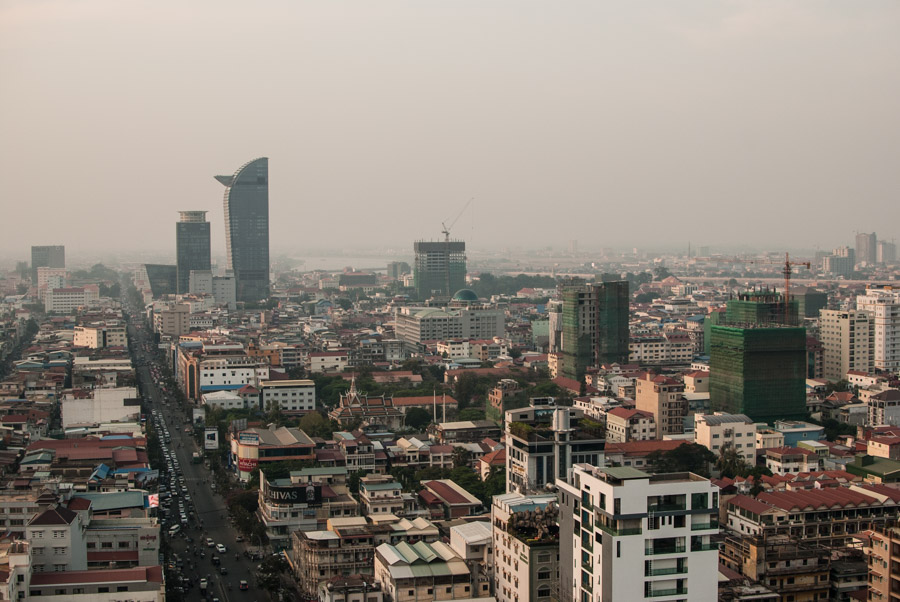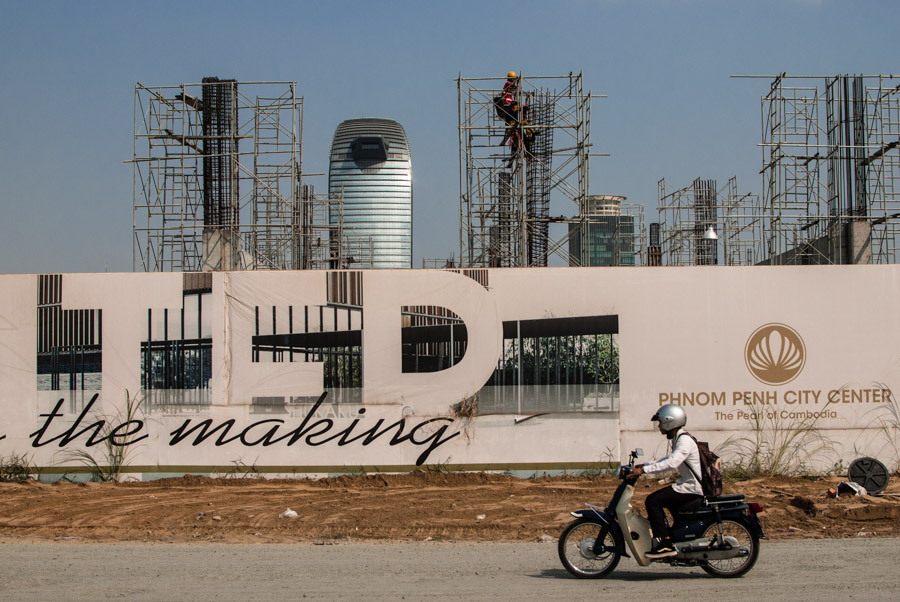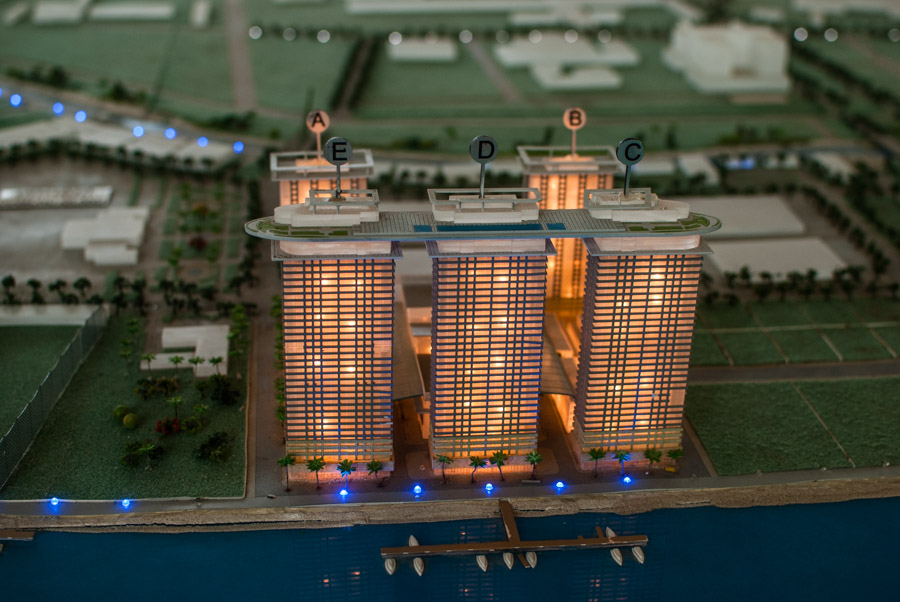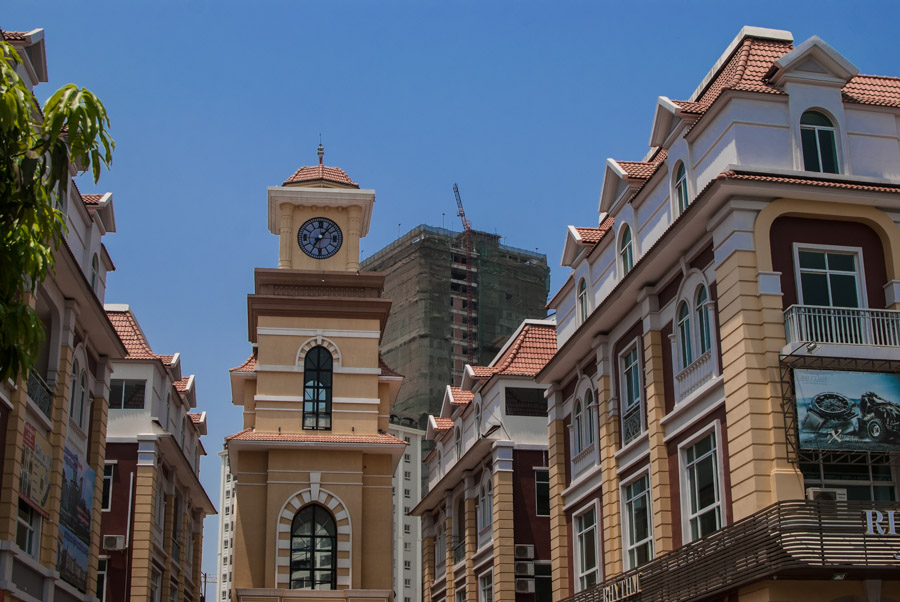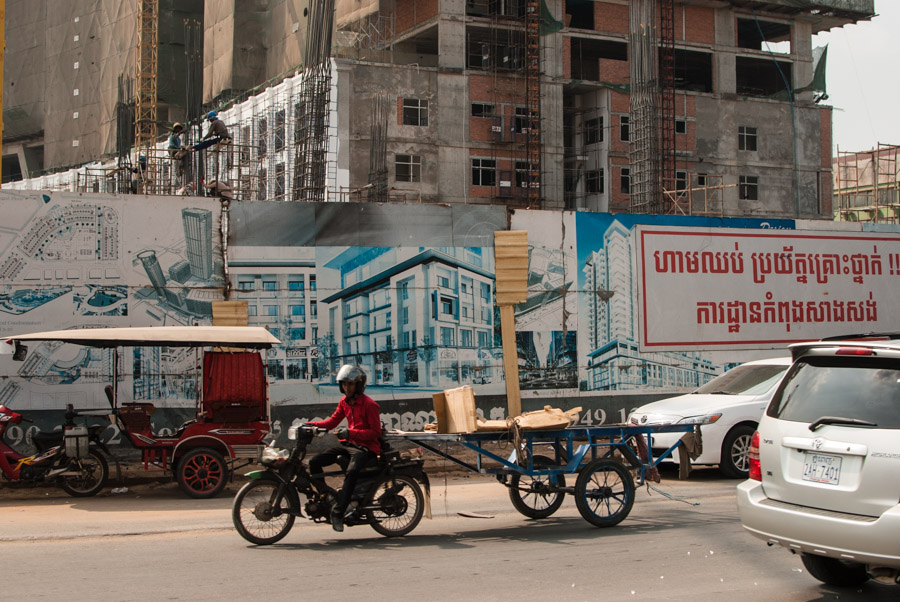PHNOM PENH — For most of its history, the sleepy Cambodian capital of Phnom Penh was best known for its charming, tree-lined boulevards and Buddhist pagodas. But over the past few years, a construction boom, fueled by a river of foreign cash, has turned this city of 2 million into one of Southeast Asia’s fastest-growing urban centers. Its low skyline, once dominated by the golden eaves of the Royal Palace, is now bisected by skyscrapers, office towers and high-rise apartment blocks.
The boom shows few signs of slowing. In 2015, the government authorized 2,305 new construction projects worth $3.34 billion, according to official figures, an increase of a third on the previous year. Chris Hobden, a manager at the local branch of U.S. real estate company CB Richard Ellis, said the strong growth was being driven by investment from within the region — particularly from China, Singapore, South Korea and Taiwan — which he predicted would continue over the coming year.
“With sustained gross domestic product growth, attractive returns and the widespread adoption of the U.S. dollar, Cambodia is well placed to attract continued real estate investment from the wider region over the course of 2016,” he said.
Phnom Penh has come a long way from the mid-1970s, when the communist Khmer Rouge seized power and emptied the city of its inhabitants –part of its attempt to transform Cambodia into a hyper-communist agrarian state. Now, nearly four decades on, strong economic growth and a long spell of political stability have transformed Phnom Penh into a boom-town.
In the decade to 2010, Cambodia experienced the fastest rates of urbanization in Southeast Asia, behind Laos, according to the World Bank. Long Dimanche, a spokesman for Phnom Penh Municipality, said that the city continues to grow at more than 1% per year. “This rate, coupled with rural-urban migration — one of the outcomes of the rising urban economy and job markets — results in a high call for housing in the city,” he said.
New horizon
As investment has risen, so has the skyline. In every direction, construction cranes dot the horizon. Billboards and supermarket flyers advertise luxury condo developments. In the leafy southern suburb of Boeung Keng Kang, the traditional home of Cambodia’s large nongovernment organization sector, elegant 1960s-era villas are steadily making way for high-rise apartment blocks.
“Everything is moving upwards,” said Johnny Chan, head of sales and marketing for Bodaiju, a $134 million Japanese condo development across from Phnom Penh International Airport. The city is “moving towards something like Bangkok.”
Between 2005 and 2014, the Cambodian economy grew by an annual average of 7.5%, according to the World Bank, spawning a small middle-class with a taste for modern-style property and developments. The newfound wealth can be seen at the $200 million Japanese-built Aeon Mall, the country’s largest, which opened its doors in 2014. Here middle-class families stroll in the air-conditioned surrounds, past restaurants, cinemas and high-end fashion boutiques.
Like Aeon Mall, Bodaiju, a joint venture between a local developer and Japan’s Creed Group, is squarely targeting this new Cambodian middle-class. When completed, the development will feature 928 units set in leafy grounds including amenities such as rooftop pools, a gym, clubhouse, mini-marts and cafes.
Chan said the company has already sold 90% of the units in its first phase, mostly to local buyers — a testament to the increased buying power in the local market. “The GDP of Cambodia has increased, and the incomes of Cambodians have also increased,” he said. “Everything’s moving very, very fast. They are really catching up.”
According to a report released by CBRE in March, the city’s condo supply is expected to increase by 19,018 units by the end of 2018, an increase of 794%. Meanwhile, total office space has tripled since 2008. Three additional malls — another by Aeon, and two more by Malaysia’s Parkson group — are currently under construction.
The epicenter of Phnom Penh’s construction boom is Koh Pich, a small island sitting at the confluence of the Mekong and Bassac rivers. In 2006, the island was handed over to the Overseas Cambodia Investment Corp., a local conglomerate with links to the country’s prime minister, Hun Sen. The group has since sold several plots on the island to high-end luxury housing developments. These include Elite Town, a gated community with streets named after Ivy League universities, and Diamond Island Riviera, a $700 million joint venture between OCIC and China’s Jixiang Development.
Billing itself as “the future of Phnom Penh,” the Diamond Island Riviera project will feature three 38-story condominium towers supporting a boat-shaped rooftop, seemingly modelled on Singapore’s iconic Marina Bay Sands Hotel. It will also feature a hospital, a shopping mall, an international school, and extensive retail space, plus two additional 33-story condominium towers. Diamond Island Riviera representatives declined an interview request, but a sales officer at the lavish project showroom on Koh Pich said the company had sold some 60% of the condos off-plan, mostly to Chinese buyers.
In February, the city unveiled its most ambitious project yet: the $1 billion, 133-storey Thai Boon Roong Twin Trade Center, which will be built on the banks of the Tonle Sap River close to Koh Pich. According to city officials, the project, supposedly slated for completion by 2019, will feature hotels, condominiums and office space. Long Dimanche said that the new towers would create hundreds of jobs and become “one of the most iconic buildings in Phnom Penh.” At 500 meters, this new mega-skyscraper would be more than twice the height of the city’s next tallest building, the 188-meter Vattanac Capital Tower, completed in 2014.
Unsurprisingly, not everyone is convinced the project will ever eventuate. Stephen Higgins, a principal at Mekong Strategic Partners, an investment and corporate advisory firm, said the project was “economically not feasible — it’s as simple as that.” He said the project symbolized the government’s tendency to green-light large “vanity projects” for which there was little demand. “I think it’s fair to say that there isn’t a lot of market research that goes into a lot of these projects,” Higgins noted.
No legal framework
Part of the problem is the lack of regulation in the sector. In its 2015 annual report released in March, Cambodia’s Ministry of Land Management, Urban Planning and Construction stated that many building projects were initiated without ministry authorization and did not conform to safety codes.
One result has been a looming mismatch between supply and demand. “There are too many projects being launched, and it brings a serious question of who’s going to buy them,” said David Van, a senior adviser for Bower Group Asia. Van pointed to the many generic apartment towers which remain half-empty, their construction driven not by demand but by a “copycat mentality” among wealthy Cambodian businesspeople eager to park their money in real estate.
In the event of a major economic downturn, or a loss of liquidity in Chinese financial markets, the source of much of the “hot money” which has fueled the boom, the Cambodian property market could find itself exposed, Van warned.
Higgins agreed with that prognosis. “There has been a bubble in the construction sector for a while,” he said. “It does not appear to be deflating yet, but deflate it will.”
Published by Nikkei Asian Review, March 22, 2016


